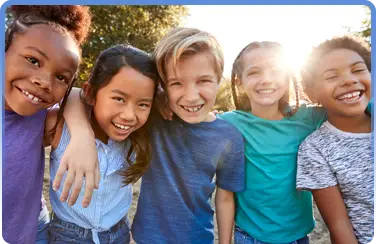How to help a Foster child with trauma at Halloween

Halloween can be overwhelming for children in foster care who have experienced trauma. Costumes, loud noises, decorations, and sugar overload can trigger fear and survival responses, such as fight, flight, or freeze. Foster parents can help by preparing children in advance, creating safe traditions, and involving them in planning activities such as pumpkin carving or choosing candy. Simplifying celebrations, keeping routines, and avoiding overly scary themes can make the holiday more fun and less stressful. With patience, empathy, and planning, Halloween can be a safe and positive experience for children in foster care.
Helping Children with Trauma at Halloween
Understanding a child's need to feel safe with a Foster parent
Fear is a normal and natural part of childhood development. Children who are in Foster Care and have suffered trauma are often scared of the dark, thunderstorms, loud voices, or even monsters under their bed, and maybe scary Halloween costumes, Halloween parties, scary Halloween decorations, and, like many adults, scary clown costumes.
Childhood fears may be incredibly powerful this time of year, when scary outdoor Halloween decorations, masks, and costumes seem everywhere. As children learn about the world around them, they are not entirely sure of fantasy and reality.
They may have experienced trauma added to their already incredible imagination; Halloween can be a scary time for them, and trick-or-treating may not be as exciting as it is to many kids. Foster parents working with children impacted by trauma need to be intentional with Halloween.
Halloween can be a day full of triggers for those children who've been impacted by trauma. There are a lot of transitions and tons of sugar. All the colors and sounds, such as fog machines, Halloween lights, and costumes, can create a sensory overload, and we often come into contact with more strangers than on a typical day.
All of these things can be a trigger for a child of trauma. Triggers can send them right into survival, and once in survival, they often go to fight, flight, or freeze. This is not a place we want to send our children to. We want them to feel safe and secure so they can enjoy this holiday with their peers.
One way to ease some of your child's fear around the holiday is to allow them to help in the Halloween preparations, such as carving the pumpkin or picking out the goodies. Try to prepare with your child ahead of time to help put their minds at ease. Allow children to put on and take off their costumes in the weeks leading up to Halloween.
This will help make the elements surrounding Halloween more understandable and help understand that costumes are another way of pretending and that the holiday is meant to be fun. You know your child best. Some children can work through manageable anxiety alongside a caregiver they trust. Others may need more time to adjust.
If your child is not quite ready to trick or treating and feels a sense of safety and security in your home, you may want to have a child help hand out candy or goodies. Try to limit who you celebrate with, such as close family and friends or a church group that only allows fun costumes, no scary costumes at all; a zombie costume is just too much. Keep decorations and activities centered on pumpkins instead of spooky stuff such as cobwebs, spiders, and monsters.
Talk to them about routine, try to keep some regular routines throughout the day, and prepare them to be back to regular schedules the following day. Of course, limit the amount of sugar and offer small goodies instead.
Providing age-appropriate activities for children frightened by Halloween and a haunted house is also important. This will help distract from the scary aspects of the holiday. Ensure you are sensitive to past traumatic events and avoid all dismissive comments such as, "Oh, that's not scary."
Halloween is fun and can be for your child too. There are often several spirited activities with young children to ensure you have a fun October and Halloween that won't include spookiness.
Look for community activities and fun things that can be done at home, such as baking Halloween cookies, painting pumpkins, and so much more!
Many church groups will have trunks or treat in very well-lit areas, and the scary side of the holiday has been removed.

Every child deserves to feel safe, especially during the holidays. If you're ready to provide a supportive home where children can heal and thrive, FosterVA can guide you on your foster parenting journey.

